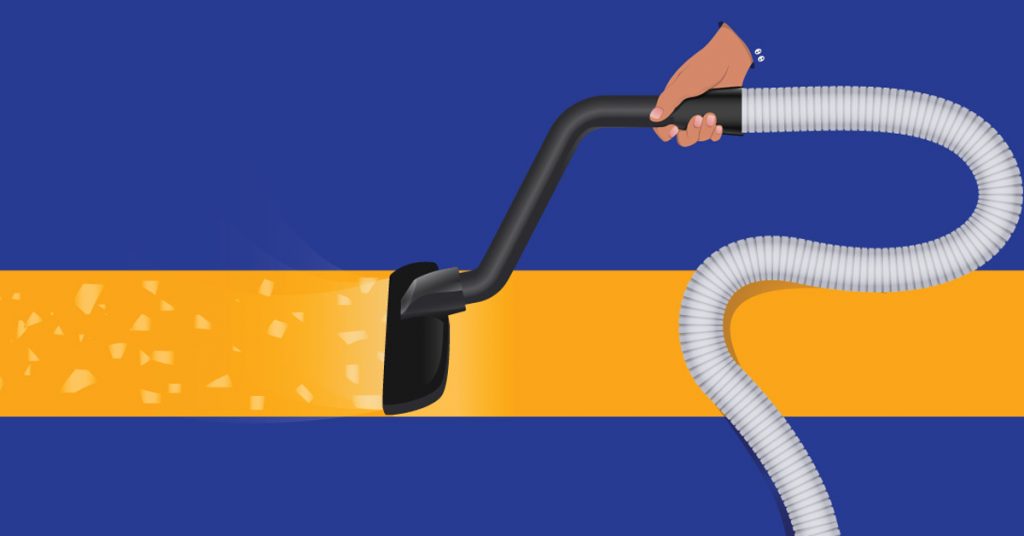Warning: Reading this article might prompt you to jump up and immediately clean your house. It might lead to stripping the sheets off every bed and washing blankets, dusting every furniture surface, and vacuuming curtains. Or it might prompt a Target run to get a hypoallergenic pillow and mattress covers for every bed in your house. So perhaps avoid reading this on a day with major deadlines.
What are dust mites?
Dust mites are microscopic, insect-like pests that feed on dead human skin cells. They thrive in warm, humid environments, as they absorb moisture from the air. They’re not parasites that bite, sting or burrow. But people who are allergic to dust or dust mites can have an issue with inflammation of the nasal passages. This is considered a dust allergy. What they’re doing is inhaling proteins in dust that comes from dust mite feces, urine or decaying bodies. That’s what’s causing the inflammation.
Where do they live?
Dust mites often live in mattresses, bedding, upholstered furniture, carpets or curtains. These serve as nests. Most exposure to dust mites occurs while sleeping or when the dust is disturbed by making the bed. They don’t stay airborne, though, unlike pet allergens.
How common are they?
They’re nearly everywhere, as about four of five U.S. homes have detectable levels of dust mite allergens in at least one bed.
Why are they a problem?
For people with allergies and asthma, dust mites are one of the major indoor triggers for reactions. When people are constantly exposed to dust mites, it can really impact their health. The allergens can trigger mild to severe allergic symptoms, from a runny nose, watery eyes and sneezing to a severe asthma attack.
What are the risk factors for a dust mite allergy?
People who are prone to other types of allergies are more likely to develop a sensitivity to dust mites. Also, if you’re exposed to high levels of dust mites, particularly early in life, it increases your risk. So, you’re more likely to develop dust mite allergies during childhood or early adulthood.
How best to reduce dust mites in your home
Out of sight, out of mind is an appropriate adage for dust mites. You can’t see them so many people don’t think about them until a blog like this reminds us of their existence (sorry). It’s near impossible to destroy all dust mites, but you can reduce them. Allergic reactions depend on how much exposure you have so if there are fewer dust mites, they can cause fewer problems.
Bedding-related approaches
- Wash sheets and pillowcases weekly in hot water and tumble dry on high heat.
- Wash blankets and bedding (comforters or bedspreads) every two months.
- Cover mattresses and pillows with dust-mite-resistant covers and wash them every two months.
- Soft toys/stuffed animals should be washed weekly using the same method used for sheets.
Living-area considerations
- Avoid upholstered furniture – leather, vinyl, plastic and wood are best to reduce dust mites. Or be sure to vacuum upholstered furniture regularly.
- Avoid heavy curtains – Venetian blinds or flat blinds are better. Washable curtains are also a good option.
- Dust furniture using a damp cloth (with Pledge or Endust) or an electrostatic cloth
- Reduce humidity – have a dry and well-ventilated house. Keep the humidity in your home less than 50 percent. Use a dehumidifier and/or air conditioner to do this.
- Remove carpets, rugs and mats (where practical and affordable). Wood or tile floors can be mopped, which helps pick up the dust.
- Wash rugs and mats regularly, if you can, and dry them outside in the sunshine, if possible. (A season-dependent activity in Minnesota!)
- Vacuum weekly, including mattress seams and upholstered furniture. Note that vacuuming causes dust mites to become airborne for 20 minutes, so it’s best to avoid vacuuming before bedtime. Also, you can air the house out for an hour or so after vacuuming, which also helps clear the air. (Also a season-dependent activity in Minnesota!)
Again, dust mites are really common, and they can be reduced with some straightforward cleaning and house-decorating considerations. While air filters are a good option for other types of allergens, they do little for dust mites because the latter aren’t airborne. Chemical sprays aren’t typically effective either.
The best approach is to reduce their number and in turn their effect on people with dust mite allergies. Studies show that more dust mites live in your bedroom than anywhere else in your home. So this is the best place to start.
Interested in learning more about how these and other lifestyle adaptations can help you with your allergies? Schedule an appointment with one of our allergy specialists.
